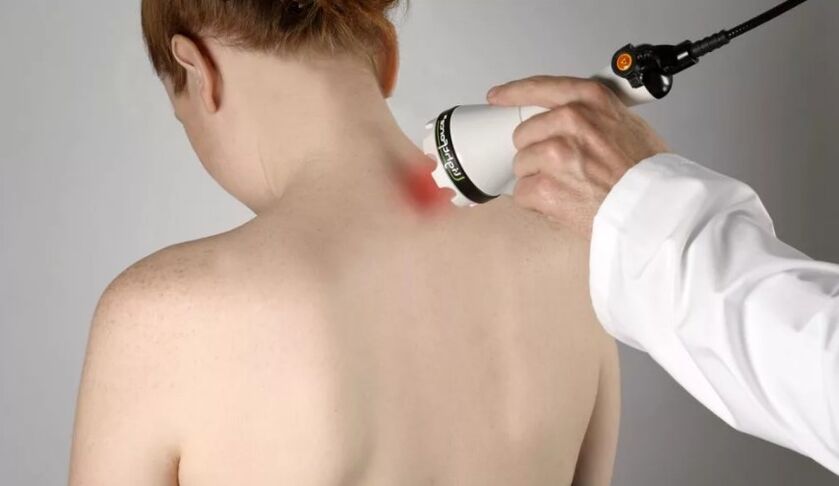
In contrast to diseases of other parts of the spine, cervical osteochondrosis occurs almost equally often in young and elderly people. It's hard to imagine that a person has never had neck pain: this is "payment" for a sedentary lifestyle that is constantly tilted at a computer or desk.
Other risk factors are bad habits and poor nutrition, obesity, poor posture and flat feet, insufficient physical activity. Carrying a bag on one shoulder can ultimately lead to osteochondrosis, which is associated with incorrect load distribution and a forced change in the normal position of the spine.
The prevalence of the disease may be the reason for the careless attitude towards it. However, it is important to remember that the treatment of cervical osteochondrosis is a mandatory measure if you want to prevent unpleasant and dangerous complications.
Why is cervical osteochondrosis dangerous?
Osteochondrosis SHOP is a degenerative disease of the cartilage of the cervical spine, which is also characterized by a violation of the structure and function of the intervertebral discs. This disease tends to progress slowly, but if the condition of the tissues worsens, other pathologies may appear:
- Hernia and bulge;
- inflammatory processes;
- Instability of the cervical vertebrae and associated risks;
- Muscle diseases;
- Paralysis, etc.
One of the most common complications is vertebral artery syndrome. This is an attack of pain that is accompanied by other signs: loss of balance, blurred vision and hearing, buzzing in the ears, dizziness, nausea and vomiting, high blood pressure, increased heart rate, loss of consciousness, and even temporary problems with speech. Despite the fact that they are reversible consequences, such symptoms are dangerous and worsen the quality of life, which means that it is necessary to prevent the occurrence of the syndrome. This is possible with the early treatment of cervical osteochondrosis.
Symptoms and Diagnosis
The localization of the pathological process in the cervical spine leads to the appearance of characteristic symptoms:
- Crunching when turning the head;
- Headache;
- Dizziness;
- Difficulty concentrating;
- Faint, half faint;
- pain in the hands, numbness, tingling in the fingers;
- Neck pain;
- Limitation of neck movement;
- Neck muscle spasms;
- Deterioration of cognitive processes.
With a combination of osteochondrosis of several departments (for example, cervical and thoracic spine), the disease can manifest itself in other signs: spasms of the back muscles, chest pain, etc.
To choose the correct treatment for cervical osteochondrosis, it is necessary to assess the level of development of the pathology, stage, in order to clarify the presence or absence of concomitant diseases. First of all, you should consult a neurologist. Based on complaints, anamnesis, an interview and a visual examination in different trunk, movement and resting positions, the doctor sends a comprehensive examination to confirm / clarify the preliminary diagnosis.
The disease is diagnosed using a number of methods:
- Radiography SHOP;
- CT;
- Myelography;
- MRI;
- Ultrasound examination of the cervical vessels, Doppler ultrasound of the arteries of the brain;
- Laboratory tests (for inflammatory processes, etc. ).
In some cases, through an accurate detailed diagnosis, you can identify the diseases that are associated with osteochondrosis. This will help you make the right decision when choosing treatment tactics.
The effectiveness of further measures depends on how timely and accurately the diagnosis was made. Despite specific symptoms, the picture of cervical osteochondrosis is similar to the course of other diseases. Therefore, it is important to differentiate the pathology and make the right choice.
How is the treatment carried out?
Treatment of cervical osteochondrosis is carried out surgically or using conservative methods. Operation is resorted to only in the most extreme cases, strict indications for intervention are the complete ineffectiveness of conservative methods (for a long time), the impossibility of their application and the rapid progression of the disease.
The treatment regimen is selected by a neurologist, taking into account the severity, general health, indications and contraindications for certain procedures. Both conservative treatment and the postoperative period require an attentive and comprehensive approach. Combine the following methods:
- drug therapy - restores cartilage tissue, relieves pain and inflammation, improves metabolic processes, saturates tissues with oxygen, etc. ;
- Exercise therapy - regular performance of the prescribed exercises corrects posture, strengthens the muscular corset, contributes to the normal tone of the neck muscles and reduces compression of nerve tissue;
- massage - massage of the cervical spine allows you to remove muscle clamps and cramps, restore the normal position of the intervertebral discs and vertebrae and normalize blood flow;
- Water aerobics, swimming - a visit to the swimming pool helps to strengthen the muscles, relieve cramps, relieve the SHOP in a natural way and stretch the spine;
- Traction therapy - traction of the spine allows you to increase the space between the intervertebral discs, correct the structure of the spine, is often used in the combination of pathologies of different localization;
- physiotherapeutic methods of treating cervical osteochondrosis - enhance the effect of taking drugs, are intended to stop pain and inflammation of tissues, contribute to their normal recovery, accelerate metabolic processes;
- dietary nutrition - the optimal water regime allows you to prevent water loss through cartilage tissue and ensure the supply of the necessary amount of vitamins and microelements.
Active treatment of cervical osteochondrosis lasts up to 3 months, depending on the severity of the disease. But even after that, the health of the spine should not be forgotten: restorative, supportive measures last up to 1 year. Adhering to optimal physical activity, diet, and also giving up bad habits is necessary for a lifetime, this is the basis for effective disease prevention.















































